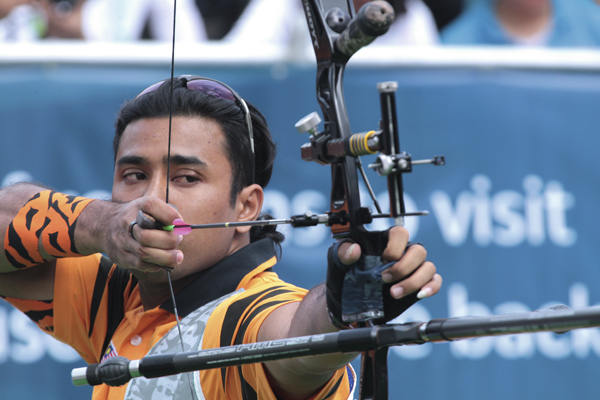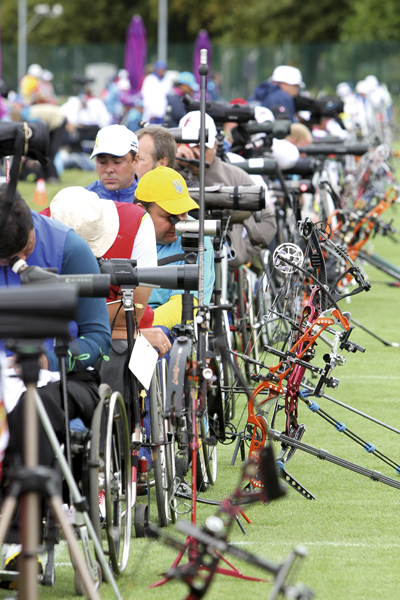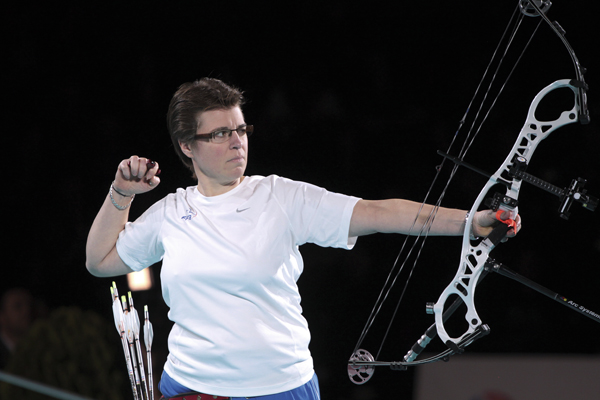Changing disciplines can bring a new lease of life to your archery experiences, says Roy Rose, who made the switch from recurve to compound and lists what the pros and cons, and what to look out for
Many archers’ first bow and arrow experience comes at a club beginners’ programme, and most often that correlates to a recurve introduction to our great sport. Some of those newcomers remain addicted to the challenges a recurve bow presents, and retain the recurve as their preference. Others, of course, for a multitude of reasons, decide at some point whether early or later in their shooting careers, to make the switch to ‘the dark side’.
In my earliest days the compound bow had not made its way into national and international events, and when it did, there was a certain stigma attached to those who made the switch. It was friendly and non-disparaging, but nonetheless jokes about ‘training wheels’ and so on were prevalent. Today the compound division, despite its non-inclusion at the Olympics, enjoys an equal footing at the Paralympic Games, and, in some other arenas, has an even higher profile than recurve.
I’ve found those who change may do so because of a quest for higher scoring, perhaps because of injury, and often, particularly for older archers, an easier poundage situation to prolong their years of shooting satisfaction. But, whatever the motivation, what can the recurve archer who is contemplating the switch expect, be aware of, or prepare for?
The first thing you will need to be aware of will be higher scoring, and there are some pertinent reasons as to why. Initially of course there are some minor adjustments, physical and mental, that will need to be made. The feel of the let off will be unusual at first, as will getting the knack of attaching your release aid choice to the loop, and also, logically, becoming fluent in attaining an unanticipated release of the arrow with an unfamiliar mechanism.
All this is more than compensated for by the numerous advantages this type of bow offers, and the knowledge that if you have been a competent recurver, the skills you have honed in that discipline will guarantee a positive switch.

People change from recurve to compound to many reasons – injury, ambition, or simply for a something a bit different
Advantage one is holding a reduced poundage, which naturally guarantees a more comfortable hold and improved aiming potential. Secondly, having a sighting system with lens magnification increases your visual image of the target, and thirdly, a string peep, which recurvers are not permitted to use, provides alignment directly through the string.
All these benefits are not as significant as the ultimate plus the compound bow affords, a one point release, which with today’s technology virtually eliminates the archery paradox. You see, the recurve archer, no matter how fluent and practised their release, must contend with a violent oscillation of the string when it is released off the fingers, and as a consequence duplicative releasing is hampered and, as a result, accuracy at the target. The recurver that wants to compete at the upper echelon level must also graduate to substantial poundage, in some cases close to 50lbs for the men and well into the 40s for the ladies.
Having a three finger anchor – no matter how the weight is distributed across the fingers, or how clean the subsequent dispatch of the shaft – does not afford the one point hook on a loop the compounder enjoys, and creates the ultimate duplication test, even for the elite. With no string peep, no bubble, and no lens magnification, once again the recurver’s form is tested.
At the highest level, the elite recurver has overcome these apparent disadvantages to a degree, and where the men’s recurve world 1440 record stands at 1389, the compound record sits at 1419. Mathematically, this comes down to less than a point an end over the 36 ends of the round, and underlines the tremendous skill of the world’s best recurvers. The women’s record is over 1400, so the margin there is even less.
The fine tuning of rest positioning, plunger button tension, nocking point placement and tiller setting are additional requirements, which are all of either lesser or non-concern for the compound archer. I have found that the compound bow is easier to tune, easier to hold, and easier to shoot, so if you were concerned about changing, I would say not to worry overmuch. The switch process can be made with reasonable ease if one has recurve experience.
Therefore, if we combine all the lesser advantages, the let off, the lens magnification, and the string peep, along with the major benefit of the one point loop release, then in a short period of time the switch for a seasoned recurver will manifest itself in an upward surge in accuracy with a minimum of fuss. I made the switch late in life. My best tournament FITA as a veteran 60+ archer was 1259, and almost immediately I was able to register scores over 1300 to a high, now in my 70s, of 1340 with a compound bow.
This, frankly, adds a new and exciting frontier, score-wise. Attaining the thrust of increased poundage, with a much lower holding weight plus the bonus of a one-point dispatch can give a whole new impetus to your mental approach. As a successful recurver, the engagement of the scapula and the expansion past the clicker you will be used to is now mirrored in the correct use of your release aid.

Though not included at the Olympics, compound enjoys equal status to recurve at Paralympic and many other events
One quandary which can create a negative for the shooter changing disciplines this way is the multitude of choices this new mechanical piece of technology, the release aid, offers them.
The recurver’s tab, while various developments and improvements have been made, remains quite a basic item, and its simplicity dictates a much narrower choice factor than the seemingly never-ending release aid options. It is imperative to settle on a release aid choice and become attached to it, and how you use it, as duplicating release aid execution is the absolute key to accuracy. It is a pitfall of the recurver making the switch to spend an inordinate amount of time, and money, chopping and changing release aids. Make an early decision, and get on with the task of execution refinement.
So if you are contemplating the change, be assured it can reinvigorate your archery outlook, and provide you with decades more of working to be the best you can be.



Can’t agree with you more! Sometimes, making a switch would bring you positive changes.